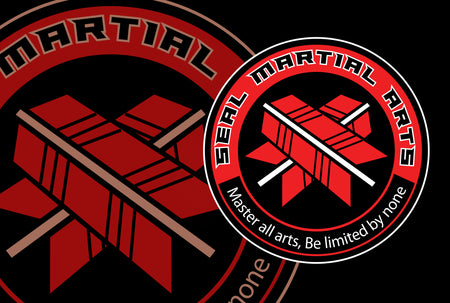
The Evolution of Ninjutsu: Adapting to Modern Challenges
In the world of martial arts, few disciplines hold the mystique and allure of Ninjutsu. With its origins steeped in secrecy and its techniques shrouded in legend, Ninjutsu, the art of the Ninja, has captivated the imaginations of enthusiasts for centuries.
However, in recent years, the once prominent Bujinkan organization, dedicated to preserving and teaching Ninjutsu, has experienced a decline. As we examine the reasons behind this decline, it becomes evident that the art of Ninjutsu must evolve to remain relevant in the modern world.
The Bujinkan, founded by Dr. Masaaki Hatsumi, served as a bastion for Ninjutsu practitioners worldwide. However, internal disputes, leadership issues and a lack of innovation have contributed to its decline in recent years. While traditional Ninjutsu techniques hold historical and cultural significance, they may not fully address the challenges of the 21st century.
In today's world, conflicts often involve advanced weaponry, technology, and tactics not present in feudal Japan. To remain effective, Ninjutsu must adapt and incorporate modern techniques and tools into its curriculum. This evolution does not mean abandoning tradition but rather integrating it with contemporary methods to create a comprehensive system for self defence and personal development.
One crucial aspect of this evolution is the inclusion of all weapons and techniques used in modern times. This encompasses firearms, improvised weapons and skills relevant to urban environments. By expanding its repertoire, Ninjutsu can equip practitioners with the tools necessary to navigate diverse and dynamic threats effectively.
Furthermore, the philosophical principles underlying Ninjutsu remain as relevant today as they were centuries ago. Concepts such as adaptability, stealth, and mental fortitude are timeless and can be applied in various contexts, from personal safety to professional success.
In addition to technical training, the Ninjutsu community must prioritise innovation, collaboration and inclusivity. By fostering a culture of creativity and open mindedness, practitioners can explore new avenues for growth and development within the art.
Moreover, embracing modern teaching methods and technology can enhance the learning experience and attract a new generation of practitioners. Online resources, virtual training platforms, and interactive learning tools can supplement traditional training methods, making Ninjutsu more accessible to a global audience.
Ultimately, the decline of the Bujinkan serves as a wake up call for the Ninjutsu community to embrace change and adapt to the evolving landscape of martial arts. By incorporating modern techniques, weapons, and teaching methods while staying true to its core principles, Ninjutsu can regain its relevance and continue to inspire generations to come.
As we look to the future, let us honor the legacy of the Ninja by evolving with the times, empowering practitioners to navigate the challenges of the modern world with skill, wisdom, and resilience.
However, in recent years, the once prominent Bujinkan organization, dedicated to preserving and teaching Ninjutsu, has experienced a decline. As we examine the reasons behind this decline, it becomes evident that the art of Ninjutsu must evolve to remain relevant in the modern world.
The Bujinkan, founded by Dr. Masaaki Hatsumi, served as a bastion for Ninjutsu practitioners worldwide. However, internal disputes, leadership issues and a lack of innovation have contributed to its decline in recent years. While traditional Ninjutsu techniques hold historical and cultural significance, they may not fully address the challenges of the 21st century.
In today's world, conflicts often involve advanced weaponry, technology, and tactics not present in feudal Japan. To remain effective, Ninjutsu must adapt and incorporate modern techniques and tools into its curriculum. This evolution does not mean abandoning tradition but rather integrating it with contemporary methods to create a comprehensive system for self defence and personal development.
One crucial aspect of this evolution is the inclusion of all weapons and techniques used in modern times. This encompasses firearms, improvised weapons and skills relevant to urban environments. By expanding its repertoire, Ninjutsu can equip practitioners with the tools necessary to navigate diverse and dynamic threats effectively.
Furthermore, the philosophical principles underlying Ninjutsu remain as relevant today as they were centuries ago. Concepts such as adaptability, stealth, and mental fortitude are timeless and can be applied in various contexts, from personal safety to professional success.
In addition to technical training, the Ninjutsu community must prioritise innovation, collaboration and inclusivity. By fostering a culture of creativity and open mindedness, practitioners can explore new avenues for growth and development within the art.
Moreover, embracing modern teaching methods and technology can enhance the learning experience and attract a new generation of practitioners. Online resources, virtual training platforms, and interactive learning tools can supplement traditional training methods, making Ninjutsu more accessible to a global audience.
Ultimately, the decline of the Bujinkan serves as a wake up call for the Ninjutsu community to embrace change and adapt to the evolving landscape of martial arts. By incorporating modern techniques, weapons, and teaching methods while staying true to its core principles, Ninjutsu can regain its relevance and continue to inspire generations to come.
As we look to the future, let us honor the legacy of the Ninja by evolving with the times, empowering practitioners to navigate the challenges of the modern world with skill, wisdom, and resilience.
